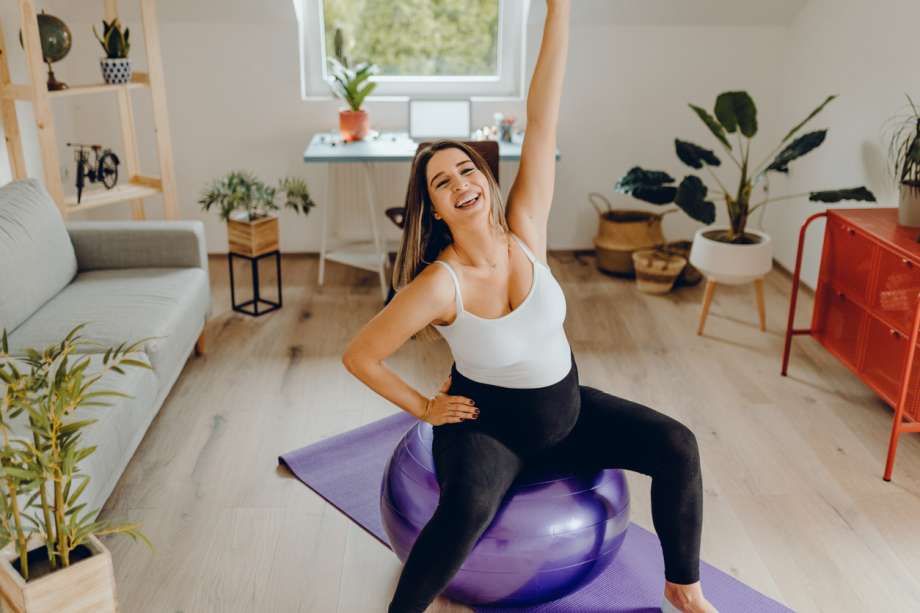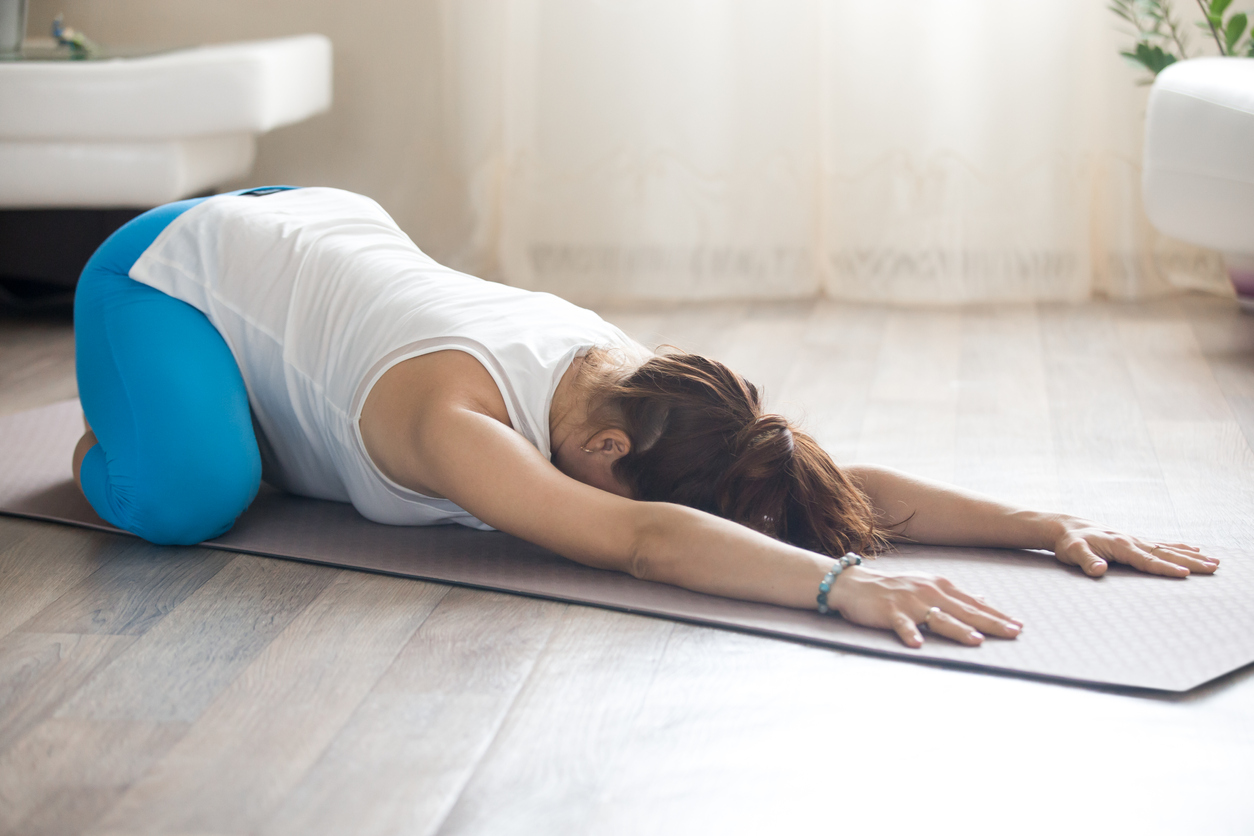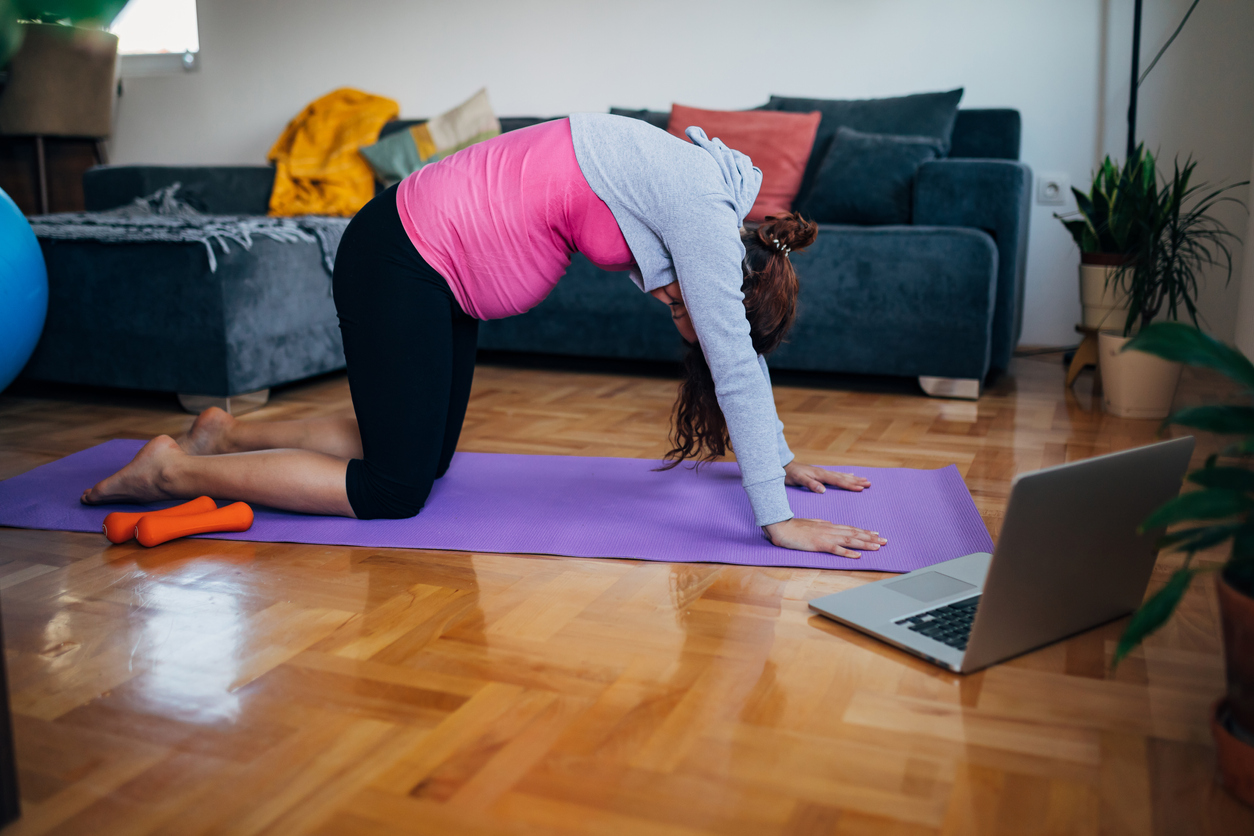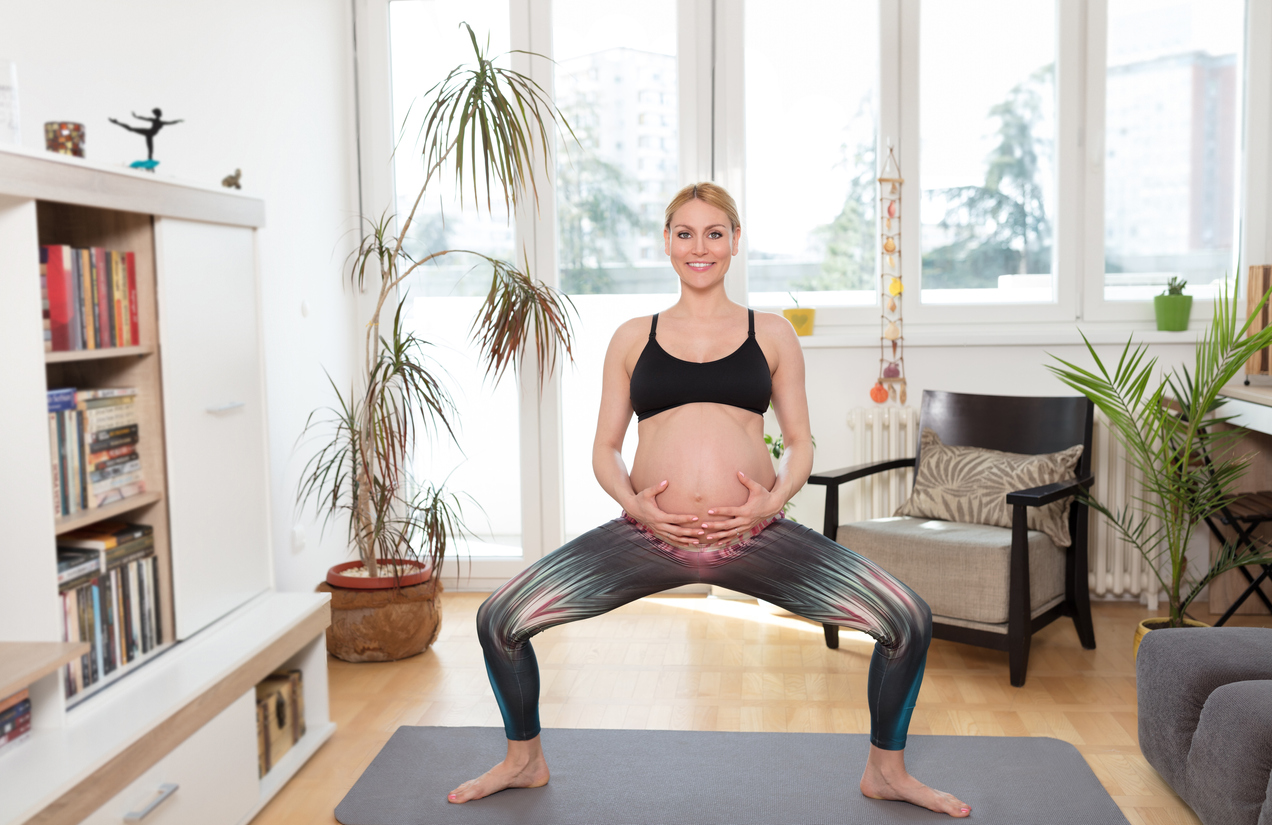Your Guide to Pregnancy Yoga: Benefits and Safe Positions

Breathe in. Breathe out. During pregnancy, your body grows, stretches and adapts to create an entire human including eyeballs, a heart, a brain and everything else.
With a growing baby inside of you, it’s no wonder you’re often feeling stressed, sore, achy and sleepy. Yoga is a natural and safe form of exercise that can help improve the mental and physical well-being of moms-to-be.
If you are a beginner in pregnancy yoga, reading this guide is the perfect place to start.
Our pregnancy yoga guide discusses pregnancy yoga programs, benefits, and safe positions. We’ll provide some general tips on doing pregnancy yoga at home and what types of classes to look for.
Related: Exercise During Pregnancy: The Absolute Dos and Don'ts
How do I start pregnancy yoga?
Before beginning any physical activity or workout program, it’s important to speak with your medical care provider first. Every person’s body is different and every pregnancy is different.
Prenatal yoga is not recommended for women who are at risk of premature labor or have medical conditions such as back pain and heart disease.
When looking for a yoga class, be sure to find those that are specifically customized for pregnancy wellness. Make sure the instructor who is teaching the class is certified in prenatal yoga and has the education and proper training regarding which poses are safe and which positions to avoid.
Learn about the different types of yoga practices. There are some types of yoga that are more suitable during pregnancy. Some examples include hatha yoga, restorative yoga and prenatal yoga.
Feel free to contact your yoga teacher before class begins so you can chat, ask questions and share any concerns about your pregnancy.
What is the difference between a prenatal yoga class and a regular yoga class?
There are several differences between prenatal yoga and regular yoga classes. Pregnancy yoga focuses on grounding the self, deep breathing techniques and gentle stretching.

It’s important to not overexert yourself during exercise. The purpose of prenatal yoga is to relax and calm the mind. Prenatal yoga classes are typically 30 minutes long and have a cooldown and relaxation period.
This allows you to bring your heart and breathing rate down, practice mindfulness, and focus on the sensations that are occurring in your body
Having strong social connections and a support system while pregnant can be beneficial for your mental health. Prenatal yoga classes are a great way to meet friends who are also expecting.
You may meet someone who is due around the same time and you can bond over pregnancy stories. Or you may meet someone who is further along or in their second pregnancy and they can tell you about their experiences.
What are the benefits of pregnancy yoga?
Research has shown that yoga can help reduce pregnancy symptoms and have a variety of health benefits including the following:
- Decrease anxiety and stress
- Better sleep
- Improved muscle strength, flexibility and endurance for labor and delivery
- Reduced nausea, carpal tunnel syndrome, shortness of breath, headaches and lower back pain
- Decreased complications related to hypertension
A systematic review that looked at the benefits of yoga for pregnant women was published in 2012. It showed that yoga can improve pregnancy, labor and birth outcomes. Specifically, doing yoga during pregnancy helped reduce stress levels, increase the quality of life, improve autonomic nervous system function and decrease pain, duration and increase comfort during labor.
What are the best and safe yoga poses during pregnancy?
Below are a few great yoga positions for pregnancy but as always, check with your doctor first before trying any type of yoga or exercise practice.
Reclined Bound Angle Pose (Supta Baddha Konasana)

This pose from Do You Yoga increases blood circulation in the lower abdomen, stretches the groin, and increases external rotation in the hips and is excellent for calming the mind.
How to Do Reclined Bound Angle Pose when Pregnant:
Modify this posture for pregnancy by placing a few pillows under your back and head to create an incline (so you are not flat on your back), and a block between your feet to broaden your pelvis.
Sit on the floor and slowly use your arms to lay back on pillows on an incline as you open the knees and legs out while you put the soles of your feet together with a yoga block in between. Breathe deeply and relax as you open the hips and relax.
Child’s Pose (Balasana)

Pretty much anyone familiar with yoga knows this pose. According to Do You Yoga, Child’s Pose can fight off nausea, relieve anxiety, and quiet the mind.
How to Do Child’s Pose when Pregnant:
Modify for pregnancy by placing a bolster or pillow under the torso for support.
Sit in a kneeling position with knees together.
Slowly open your knees and let your belly drop down between your legs as you carefully walk yourself down onto the pillows in front of you and embrace them with your head turned to the side.
This allows support of your head and chest while opening your hips and the weight of your belly to hang down and relieve lower back discomfort.
As you’re hanging out in Child’s Pose, you may be curious about things you should avoid while you’re pregnant: Things to Avoid When Pregnant Around the World: It’s Not What You Think!
Cat/Cow Pose (Marjaryasana Bitilasana)

Yet another easy, popular pose that is perfect for the expecting mom as it gets the weight of a growing belly away from your lower back.
How to Do Cat/Cow when Pregnant:
Get onto the floor on all fours with arms and legs body width apart with hands and wrists directly under your shoulders and knees aligned with your hips.
Start with the Cow Pose by carefully looking up and arching your back so your belly drops down and your upper torso moves upward toward the ceiling.
Keep breathing and slowly move into the opposite position, Cat Pose.
Just as a cat arches their back, slowly move your back into a curve so your spine is rounded toward the ceiling.
Gently move back and forth into these two positions a few times while slowly breathing relieving back pain and opening up the chest for greater breathing ability.
Goddess Pose (Utkata Konasana)

We love the name of this prenatal yoga pose because isn’t every expecting mom a Goddess?
This is an amazing pose to prepare for childbirth because it opens the hips and groin and creates space in the pelvis. It also strengthens and tones the many muscles in the legs.
How to Do Goddess Pose when Pregnant:
Stand on a yoga mat and open your legs so your legs and lower body form a square shape.
To prevent injury, line up your knee with the second toe to keep it stable.
Then lift your arms at 90-degree angles so your entire body is upright and arms and legs are forming right angles. Don’t go beyond a stretch that is comfortable for you.
Take a few deep breaths then slowly bring your arms down and one leg back to vertical, then the other.
What yoga poses should you avoid during pregnancy?
Always ask your instructor whether a certain pose is safe during pregnancy. They can give you alternate or modified versions of the posture. To prevent hurting your back, always bend from your hips, not your back when doing yoga poses.
Avoid types of poses that involve the following:
- Those that require lying on your back or belly
- Those that require deep backbends or forward bends
- Those that require you to twist deeply and puts pressure on your abdomen
- Those that require abdominal stretching
As your pregnancy progresses through the second and third trimesters, you may have trouble keeping your balance as your center of gravity shits. Your body’s range of motion may become more limited. You can use props such as yoga blocks, straps, bolsters and pillows to help you adapt to these changes.
During your yoga routine, pay attention to how your body feels. Don’t go beyond what is comfortable.
If you feel pain or symptoms such as decreased fetal movements, vaginal bleeding or contractions, do not continue the class, inform your yoga teacher and contact your healthcare provider immediately.
Is hot yoga safe during pregnancy?
Hot yoga is not safe for pregnant women. Hot yoga involves holding specific positions and doing vigorous movements that can raise your internal temperature to unhealthy levels and cause hyperthermia. A type of hot yoga, called Bikram yoga, can raise the room’s humidity to 40% and increase the room temperature to approximately 105 F (40 C).
Exposure to excessive heat during pregnancy has been shown to increase the risk of neural tube defects and other malformations in fetuses. Overheating can increase the risk of muscle damage, torn cartilage and overstretching in pregnant women.
Hot yoga can increase the risk of injury during pregnancy because pregnancy can cause women to be heavier and have looser tendons, ligaments and muscles,
In the first trimester, progesterone causes the blood vessel walls to dilate which lowers blood pressure; therefore, a pregnant woman is at a higher risk of fainting and dizziness when exposed to excessive heat such as hot yoga.
Good resources and classes for starting pregnancy yoga
During your next prenatal check-up, ask your healthcare provider if they recommend any pregnancy yoga classes to take or yoga instructors to connect with. Check out your local community center to see if they offer prenatal yoga classes.
You can also follow along at home with online prenatal yoga videos. Here are some classes that we like:
- Glo Yoga
- Gaia
- Yoga with Adriene
- Knocked-Up Fitness
- The Prenatal Yoga Center
- Body Ready Method
- Do You
Learn more about pregnancy exercise guidelines here.

